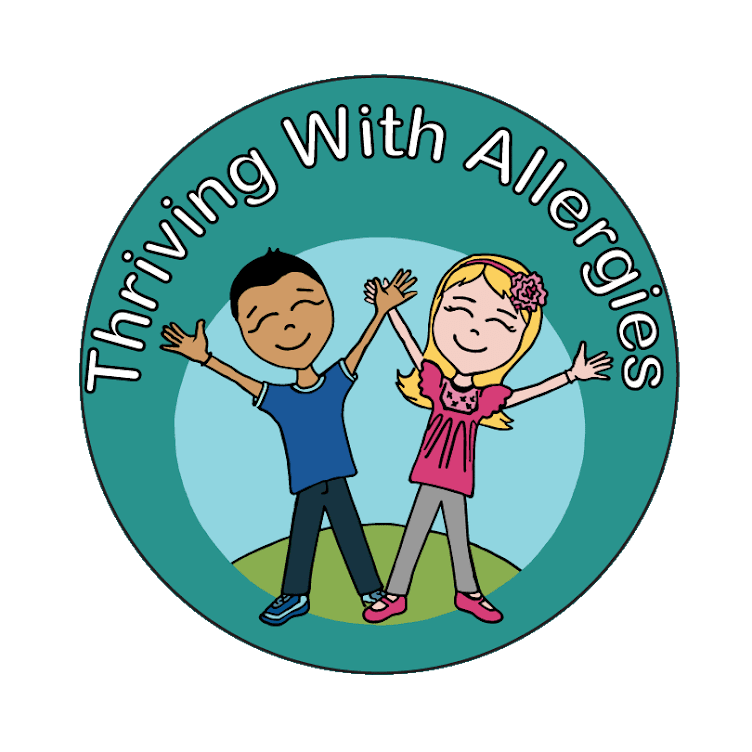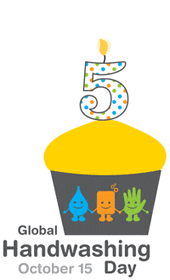Aren't fresh fruits and vegetables supposed to be the definition of a healthy, kid friendly, allergy friendly snack? So what is going on?
Not medical advice! Just my opinion!
From what I have read, many of our kids with fruit and veggie allergies are reacting to them because their bodies are mistaking the fruit, or veggie for pollen. So, if your little one is getting an itchy mouth, and tongue from a piece of fresh fruit, it may be that their immune system is telling them that they are eating a handful of pollen, rather than the piece of fruit that they are actually eating.
This has a name:
Oral Allergy Syndrome, or
Food Pollen Syndrome. It is not that the pollen is somehow stuck to the fruit, rather, the proteins that make up the fruit are so similar to the proteins that make up the pollen, that for some, the body can't tell the difference. Most Oral Allergy Syndrome (OAS) reactions are mild, but some can be severe, and even cause anaphylaxis. So, take yourself, or your child in to see an allergist if you are experiencing these symptoms.
OAS Symptoms may include:
Itchy mouth, tongue, or throat
Mild swelling of the lips, throat, or tongue
Hives in and on the mouth
In severe cases it may lead to a more severe systemic reaction where it goes beyond just the mouth, and multiple body systems are involved. For example: itching, runny nose, hives, wheezing, coughing, stomach pain, vomiting, closing of the throat, and a dangerous drop in blood pressure. Anaphylactic shock can occur in highly allergic children, and adults. An allergist should be consulted if you have had a systemic reaction, and an Epipen may be prescribed if needed.
Testing for OAS:
With my children, we have done Skin Prick Testing (SPT) for OAS. For us it has been very helpful. We only test for foods that have caused reactions in the past, as false positives can happen. For fruit and vegetable testing, you need to have a special kind of Skin Prick Test done called a Prick-to-Prick test.
Note: Testing is not 100% accurate especially for OAS. If your child is experiencing symptoms including, but not limited to: an itchy mouth, hives, swelling of the lips or tongue, or eczema flare ups after eating certain foods, then you may want to avoid those foods even with a negative SPT.
What is a Prick-to Prick Skin Prick Test?
This test uses fresh fruits and vegetables instead of the usual factory samples. The allergist will have you bring in the fresh fruits and vegetables for this prick-to-prick test because fruit and vegetable proteins are very delicate, and break down easily. If they use the factory samples, you may end up with a false negative as the proteins may have broken down. The allergist will lightly scratch your child's back and then place a tiny bit of the allergen on top of the scratch. It is not painful, just uncomfortable as it can cause itchiness at the site of the scratch.
If it is that simple, why not do it at home?
With any type of skin prick testing,
severe reactions are uncommon, but
can occur. Therefore all skin prick testing needs to be done under an allergist's care, in the appropriate setting, in case of a severe reaction, like anaphylaxis. You will be asked to wait 20 min or longer at the allergist's office after the test to make sure there is no adverse reaction to the test.
Personal experience with prick-to-prick SPT: After false negatives with a regular SPT using the factory samples, we were given the green light to eat the fruits, which resulted in a severe systemic reaction. So, after a follow up visit, the allergist called us back in for a prick-to-prick test using fresh fruit this time. I found it ironic to go grocery shopping for a large bag of foods that my child was allergic to, and then enter the allergist's office with the grocery bag full of fresh produce.
The test was painless, just itchy. After the testing, and the 20 minute wait, the allergist made sure that we had our EpipenJR twin pack as my daughter had a history of severe reaction to one of the fruits, and sent us on our way.
Photo is of a skin prick test done on the back. Looks more uncomfortable than it was! Each hive is called a "wheel" and the red area around it is called the flare. It is measured by the size of the flare,
and the wheel separately in mm. Schedule a follow up visit so that you can discuss the results with the allergist.
Important to note: Some people with OAS can eat the fruits and vegetables that they react to when fresh after they are cooked, frozen, or pickled, as those processes can break down the proteins that are similar to the pollen they are allergic to, BUT others can not. Talk to your allergist to see what they suggest.
Odd Facts:
Some fruits are more allergenic the riper they are. For example: My daughter can eat an unripe, hard as a rock nectarine, but develops an itchy mouth when eating a ripe nectarine.
Some OAS sufferers can eat raw apples (and other fruits with skin) when peeled. This is because the skin has a higher concentration of proteins than the flesh. My daughter still reacts to the peeled apples, but it works for many others!
Pollen count matters...sometimes. For example: Apples have cross reactive proteins with Birch tree pollen. When the Birch pollen is high, my daughter can't eat an apple without hives, and an itchy mouth, but in the winter, when the pollen count is 0 she can eat apples with no issue. With raw cabbage, she reacts to it all year round, even when the cross reacting mugwart pollen is low.
You can react to one variety of apple, cherry, grape, etc., but not necessarily all varieties as some are more or less allergenic than others. In example: One apple variety is less allergenic, than another.
You can read about an apple study
here:
Some fruit allergies are more than simple OAS and the fruit or veggie should not be eaten fresh or cooked as the person's immune system is allergic to proteins (such as Lipid Transfer Proteins) that are not broken down easily by cooking etc. In this case it should be avoided in all forms as the reaction can be life threatening. You can read about Lipid Transfer Protein Allergies here:
LTP Fruit Allergies










